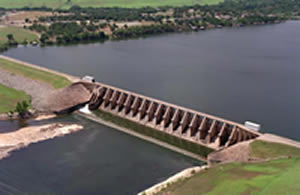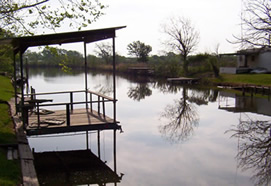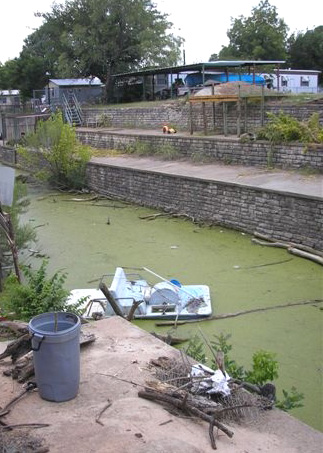Members of the Lake Granbury community have come together with the Brazos River Authority and other organizations to tackle
a problem that has long troubled the waters of this beautiful Central Texas destination.

As part of the Lake Granbury Watershed Protection Stakeholder Group, the Authority is coordinating the planning and
implementation of the Lake Granbury Watershed Protection Plan. The effort is meant to reduce the amount of E. coli bacteria in coves around the lake.
E. coli is normally found in the intestines of humans and other warm blooded animals. It can contaminate food,
soil and water bodies. Researchers have found contact with the bacteria can cause gastrointestinal illnesses and in the worst cases, even death.
For several years, water quality tests have found elevated levels of E. coli that exceed standards set by the state
in several of the man-made coves around the lake.

Much of this property is located in unincorporated areas of Hood County that does not have access to a municipal sewage system.
Over time, about 9,000 septic tanks have been installed close to the lake; some located in areas where the soil is not suitable for a septic system or on property
not large enough for an adequate absorption field.
Compounding this problem, the man-made coves were constructed as shallow, dead-end canals with little opportunity to circulate
with the lake water.
The Texas Commission on Environmental Quality (TCEQ) contracted with the Authority to develop a Watershed Protection Plan.
The plan is intended to assess the cause of the E. coli problem and to develop a program to reduce the bacterial problem.
A group of more than 70 stakeholders began meeting in early 2006 to begin the research and planning process.
Included in the stakeholder group were representatives from the cities of Granbury and DeCordova Bend, Hood County and Acton Municipal Utility District.

Joining from the business community were the Chamber of Commerce, the Association of Realtors, Luminant Power,
Texas Farm Bureau and local agricultural representatives, septic and water companies and others. Homeowner and other associations and individual citizens joined the effort.
After working for more than three years, the group has crafted the Watershed Protection Plan. The proposal is to be submitted to
the TCEQ in May. It will then go to the U.S. Environmental Protection Agency for approval.
The stakeholders have identified several areas to begin reducing the E. coli problem including an education plan.
Stakeholders proposed creating local city and county ordinances to help track properties with septic tanks. The group also
pushed to change the path water drains from these properties and to create basins to catch water from larger watersheds around the lake.

The Authority will apply through TCEQ for a grant to fund two more stakeholder suggestions. The roughly $828,000 grant includes
about $340,000 in matching funds, covered by the Authority and Texas AgriLife through services they will provide. The grant will fund two full-time positions that will coordinate
education and watershed issues around the lake.
The watershed coordinator will work with local governments and others to obtain grants and carry out stakeholder proposals,
said Tiffany Morgan, Authority environmental and compliance manager. The education coordinator will teach residents, local associations, agricultural groups and others about the
E. coli issue and the plan.
The grant will cover the cost of the coordinators salaries for three years. Morgan said a timeline for the cleanup effort is
unclear. Some of the needed changes will require local governments to pass ordinances, and that will take time.
“Lake Granbury is the lifeblood of Hood County, with the majority of the county’s communities relying on the lake for drinking water,
irrigation, industry, and recreation,” Morgan said. “The economy in Hood County is closely tied to Lake Granbury and the environmental condition of the lake is crucial to the county’s residents.
At times, levels of bacteria in some of the canals can cause a concern for the safety of contact recreation such as swimming and skiing.”
Morgan added, “It is imperative that this problem be rectified to ensure a continued usable and safe water supply for the lake and
to preserve the current high quality of life for area residents.”